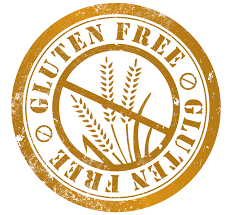Busting the Myths of Gluten-Free

March 16, 2016
“You can’t eat anything.” “You can’t have pizza?” “How do you live?” “You must be a health freak.” These are just some of the comments an individual on a gluten-free diet hears on a daily basis. There are many misconceptions of people that cut gluten out of their everyday diet. Commonly overlooked are the various reasons for the diet, including disease, health/wellness, and allergies. Most outsiders view the diet as a favored choice, tying connotations of snobbery to it. Curious about a gluten-free diet? Here are the facts.
What is a gluten-free diet? Gluten consists of wheat, barley, rye, oats, grains and malt, ingredients that are present in many foods and that make dough elastic. Some of the most notable products with gluten are: breads, pizza, cakes, cookies, pastas, and crackers. Some small ingredients with gluten are in everyday foods, too, like: caramel color, MSG, Modified Food Starch, and soy sauce. There are many substitutions for wheat/gluten with the rising numbers of gluten-free needs all around the world. Currently, corn, rice, coconut and almond are some of the most common substitutes of wheat. Sold in the form of flour, these products are used to make gluten-free food taste “normal”. Companies like Betty Crocker, Pillsbury, Cheerios and Chex are just a handful of the many companies that have adjusted their products to be gluten-free friendly.
Some consumers choose to eat gluten-free for health and wellness– they look to lose weight or to attempt to make themselves more nutritioned. What typically comes to mind is the Whole Foods-shopping, mile-running, gym junky. These individuals don’t necessarily have to restrict themselves, they choose to. They do so because of something along the lines of humans not being able to fully digest wheat, wheat that has little nutritional value and that can cause different sicknesses. It has been proven that eating gluten-free can benefit a person, but, if asked, many who are forced to eat gluten-free would say they envy these forbidden proteins. There are an assortment of celebrities that eat gluten-free by choice–Miley Cyrus, Lady GaGa, and Zooey Deschanel! The impact gluten-free eating has had on weight loss varies, but cutting out gluten has been proven to cleanse the digestive system.
Mental disorders and disease also stand as one of the leading reasons people choose to eat gluten-free. Autism has scientifically been tied to gluten, but how closely is still undetermined. It is unknown what specifically causes autism, but doctors have found that keeping a gluten-free diet helps limit the symptoms of autism. The Chex company was one of the first big brand companies to go gluten-free, and they were praised for their support of autistic adults and children. Celiac disease is also tied to gluten. Though it is unrelated to autism, both diseases prove the dangers of gluten. Celiac is an uncured autoimmune disease in which victims cannot have any form of gluten, and if consumed it can cause great pain or even fatality. When Celiac patients consume gluten, their body is unable to process it and it wears away the lining in their small intestine, causing destruction of the intestine, extreme discomfort, vomiting, diarrhea, and extreme gas. Most celiacs are completely unaware of their disorder, gluten causing extreme damage before it can be helped.
The most common reason for a wheat-free diet is sensitivity to gluten; like any other food allergy, the body rejects gluten completely. When asked their reasoning for a GF diet, the most common answer is, “I am gluten-sensitive,” or “I am gluten-intolerant.” These individuals have usually been told by their doctors to stay away from gluten because their body does not react well to it. Medicine can be taken to relieve symptoms and even prevent reactions. This intolerance is far less strict, however, than that of those with celiac’s disease, leaving more room to “cheat” on diets. This doesn’t dispel the fact that both parties still need to take caution and read labels when doing the weekly shopping. “Cross contamination” is the term used in restaurants and factories when a gluten-free product making process comes in contact with a gluten product. If products are processed on the same equipment as wheat products or fried in the same oil, they become cross contaminated and thus left unable to be consumed by those with an intolerance. These gluten-sensitive shoppers need to be all the more cognizant of their risk.
There are many reasons individuals keep a gluten free diet, and they’re often much more complex than the usual stereotype. No, eating gluten-free is not simply a fad; some people are medically-obligated to do so. On the plus side, companies are coming across breakthroughs every year for gluten-free friendly products, just as the need for them increasing. With this progress, there is hope that in the near future there won’t be any questions or scrutiny surrounding the diet, that the style will simply be something that is a fact of life.











